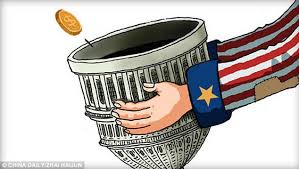 The blog demonstrates why companies should encourage employees to take a nap and what benefits can one extra hour rest bring to the overall productivity. In many small companies in China, employers expect employees to work overtime, sometimes over 12 hours. In order to reduce overall cost and increase profit, those employers exhaust the workers, trying to get the best out of everyone. What these employees do not realize is that overtime working usually has a negative effect on workplace performance and leads to errors and loss. In contrast, successful and large companies usually treat their employees well, encouraging employees to take naps during work. These smart employers know that only well-rested workers are more efficient and creative. As proven in many cases, “Napping at work can make your employees feel more refreshed and revitalized, enabling them to perform their duties more competently.” The companies that allow their workers to nap actually prevent the potential loss that occurs as the adverse consequence of sleep deprivation.
The blog demonstrates why companies should encourage employees to take a nap and what benefits can one extra hour rest bring to the overall productivity. In many small companies in China, employers expect employees to work overtime, sometimes over 12 hours. In order to reduce overall cost and increase profit, those employers exhaust the workers, trying to get the best out of everyone. What these employees do not realize is that overtime working usually has a negative effect on workplace performance and leads to errors and loss. In contrast, successful and large companies usually treat their employees well, encouraging employees to take naps during work. These smart employers know that only well-rested workers are more efficient and creative. As proven in many cases, “Napping at work can make your employees feel more refreshed and revitalized, enabling them to perform their duties more competently.” The companies that allow their workers to nap actually prevent the potential loss that occurs as the adverse consequence of sleep deprivation.
Other than allowing naptime during work, many successful companies aim to create a pleasant working environment for employees. Google and Zappos are two perfect examples. They provide free food and drinks for employees, celebrate their accomplishment from time to time and allow them to have fun in the workplace. The CEO of these two companies obviously had understood a principle- Happy employees make profitable business!





